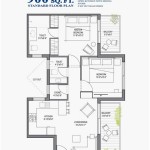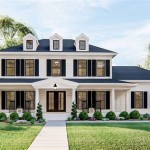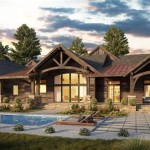Planning to build a house is a complex and multifaceted process that requires meticulous planning and execution. It involves a comprehensive understanding of various aspects of construction, including design, materials, labor, and financing. The process typically begins with the development of a clear vision and purpose for the house and culminates in the realization of a fully functional and aesthetically pleasing structure.
The benefits of planning to build a house are numerous. It allows for customization and personalization, ensuring that the house meets the unique needs and preferences of the owner. Moreover, it enables cost control and efficient resource allocation, as the project is guided by a detailed plan that outlines the necessary materials, labor, and timeline. Planning also mitigates risks and uncertainties by providing a roadmap for the construction process, reducing the likelihood of unexpected delays and unforeseen expenses.
To successfully plan for building a house, it is essential to adhere to a structured approach. This includes conducting thorough research, establishing a realistic budget, selecting a suitable design, securing necessary permits and approvals, and hiring qualified professionals. By following these steps, homeowners can increase the probability of a successful and rewarding building experience.
Planning to build a house involves meticulous attention to various crucial aspects. Here are nine key points to consider:
- Establish clear vision
- Set realistic budget
- Choose suitable design
- Secure permits and approvals
- Hire qualified professionals
- Plan for materials and labor
- Manage timeline effectively
- Consider sustainability factors
- Address maintenance and upkeep
By carefully addressing these points, homeowners can lay the foundation for a successful and rewarding building experience.
Establish clear vision
Establishing a clear vision is the foundation upon which the entire house-building process rests. It involves defining the purpose and characteristics of the house, ensuring that the final product aligns with the homeowner’s needs and aspirations.
- Define lifestyle and needs: Consider how the house will be used, the number of occupants, and their specific requirements. This includes aspects such as the number of bedrooms and bathrooms, the desired layout and flow of spaces, and any special features or amenities that are essential.
- Establish aesthetic preferences: Determine the desired architectural style, exterior finishes, and interior design elements. Consider factors such as personal taste, the surrounding neighborhood, and the overall aesthetic vision for the property.
- Set priorities and goals: Identify the most important aspects of the house and prioritize them accordingly. This will help in making informed decisions throughout the planning and construction process, ensuring that the most critical elements receive the necessary attention and resources.
- Create a mood board or inspiration album: Collect images, materials, and ideas that represent the desired style and ambiance for the house. This visual representation can serve as a reference point during the design and construction phases, helping to ensure that the final product aligns with the initial vision.
By taking the time to establish a clear vision, homeowners can lay the groundwork for a house that truly reflects their unique needs and aspirations. This will serve as a guiding principle throughout the planning and construction process, ensuring that the end result is a space that is both and aesthetically pleasing.
Set realistic budget
Establishing a realistic budget is crucial for any house-building project. It involves estimating the total cost of construction, including materials, labor, permits, and other expenses, and ensuring that the necessary financial resources are available.
The first step in setting a budget is to gather information on the costs associated with building a house in the specific location and market. This can be done by researching online resources, consulting with local contractors, and reviewing industry publications. It is important to consider both the hard costs, such as materials and labor, and the soft costs, such as permits, inspections, and insurance.
Once the cost estimates have been gathered, the next step is to prioritize the features and amenities that are most important and allocate the budget accordingly. This may involve making trade-offs and adjusting the initial vision to align with the financial constraints. It is advisable to include a contingency fund in the budget to cover unexpected expenses that may arise during the construction process.
To ensure that the budget remains realistic, it is essential to monitor expenses throughout the project and make adjustments as needed. This may involve negotiating with contractors, exploring cost-saving alternatives for materials and finishes, and seeking professional advice to optimize the use of resources. By adhering to a realistic budget, homeowners can avoid financial strain and ensure that the house-building process is completed without compromising quality or functionality.
Setting a realistic budget is a critical aspect of planning to build a house. By carefully estimating costs, prioritizing features, and monitoring expenses, homeowners can ensure that their financial resources are used wisely and that the final product aligns with their financial capabilities.
Choose suitable design
Choosing a suitable design for the house is a crucial aspect of the planning process. It involves selecting a design that meets the functional needs of the occupants, complements the surrounding environment, and aligns with the aesthetic preferences of the homeowners.
The first step in choosing a design is to consider the lifestyle and needs of the occupants. This includes factors such as the number of bedrooms and bathrooms required, the desired layout and flow of spaces, and any specific features or amenities that are essential. It is also important to consider the size and orientation of the building plot, as these factors will influence the design possibilities.
Once the functional requirements have been established, the next step is to explore different design styles and options. This can be done by browsing architectural magazines, visiting model homes, and consulting with architects and designers. It is important to consider the architectural style of the surrounding neighborhood and the overall aesthetic vision for the property.
When selecting a design, it is advisable to prioritize energy efficiency and sustainability. This can involve incorporating features such as natural lighting, passive solar heating, and energy-efficient appliances. By choosing a design that is both functional and sustainable, homeowners can create a comfortable and environmentally friendly living space.
Choosing a suitable design is a multi-faceted process that requires careful consideration of various factors. By taking the time to understand the needs of the occupants, explore design options, and prioritize sustainability, homeowners can select a design that will create a house that is both aesthetically pleasing and functional for years to come.
Secure permits and approvals
Securing the necessary permits and approvals is a crucial step in the house-building process. It involves obtaining permission from local authorities to construct the house and ensuring that the design and plans comply with building codes and zoning regulations.
The first step in securing permits is to contact the local building department and inquire about the specific requirements for the project. This will typically involve submitting a set of construction plans, which should include detailed drawings of the house’s design, materials, and specifications.
The building department will review the plans to ensure that they meet all applicable codes and regulations. They will also conduct inspections throughout the construction process to verify that the work is being done according to the approved plans. In some cases, additional permits may be required from other agencies, such as the fire department or environmental protection agency.
Obtaining the necessary permits and approvals can be a time-consuming process, but it is essential for ensuring that the house is built safely and legally. By working closely with the local building department and addressing any issues promptly, homeowners can avoid delays and potential legal complications.
Securing permits and approvals is a critical aspect of planning to build a house. By understanding the requirements, submitting the necessary documentation, and cooperating with local authorities, homeowners can ensure that their project is compliant with all applicable regulations and that the construction process proceeds smoothly and safely.
Hire qualified professionals
Hiring qualified professionals is essential for ensuring that the house-building process is executed safely, efficiently, and to a high standard of quality. This includes hiring a licensed architect or designer to create the plans, a general contractor to oversee the construction, and skilled tradespeople to perform specialized tasks such as electrical work, plumbing, and carpentry.
When hiring an architect or designer, it is important to look for professionals who have experience in designing houses that meet the specific needs and preferences of the homeowners. They should be able to translate the homeowners’ vision into a functional and aesthetically pleasing design that complies with all applicable building codes and regulations.
The general contractor is responsible for managing the overall construction process, including hiring subcontractors, scheduling work, and ensuring that the project is completed on time and within budget. It is important to hire a general contractor who has a proven track record of success and who is familiar with the local building environment.
Skilled tradespeople are essential for completing the various tasks involved in house construction, such as framing, electrical work, plumbing, and finishing. When hiring tradespeople, it is important to look for individuals who are licensed and insured, and who have experience working on similar projects.
By hiring qualified professionals, homeowners can increase the likelihood of a successful and rewarding building experience. Professionals bring their expertise, experience, and attention to detail to the project, ensuring that the house is built to the highest standards of quality, safety, and functionality.
Plan for materials and labor
Planning for materials and labor is a crucial aspect of house construction. It involves estimating the quantities and costs of materials needed, as well as the labor hours required to complete the project. This information is essential for creating a realistic budget and timeline for the project.
- Estimate material quantities:
This involves creating a detailed list of all the materials that will be needed for the project, including lumber, concrete, roofing materials, windows, doors, and finishes. The quantities should be based on the construction plans and specifications.
- Research material costs:
Once the material quantities have been estimated, the next step is to research the costs of the materials. This can be done by obtaining quotes from suppliers, visiting home improvement stores, or using online resources. It is important to factor in the cost of delivery and any applicable taxes.
- Estimate labor hours:
Estimating labor hours involves determining the amount of time that it will take to complete each task in the construction process. This can be done by consulting with contractors, referring to industry standards, or using online resources. It is important to consider the skill level of the workers and the complexity of the project.
- Secure subcontractors:
For specialized tasks such as electrical work, plumbing, and HVAC, it is necessary to hire subcontractors. When selecting subcontractors, it is important to look for individuals who are licensed and insured, and who have experience working on similar projects. It is also important to negotiate a fair price and establish a clear contract.
By carefully planning for materials and labor, homeowners can ensure that they have the necessary resources to complete the project on time and within budget. This will also help to avoid delays and potential cost overruns during the construction process.
Manage timeline effectively
Managing the timeline effectively is crucial for ensuring that the house-building project is completed on time and within budget. It involves creating a detailed construction schedule, monitoring progress regularly, and taking corrective action when necessary.
The first step in managing the timeline is to create a detailed construction schedule. This schedule should include all of the major tasks involved in the project, as well as the estimated start and finish dates for each task. The schedule should be realistic and take into account the availability of materials, labor, and equipment.
Once the construction schedule has been created, it is important to monitor progress regularly. This can be done by holding regular progress meetings with the general contractor and subcontractors, and by reviewing project documentation. If any delays or problems are identified, it is important to take corrective action promptly. This may involve adjusting the construction schedule, reallocating resources, or hiring additional workers.
By managing the timeline effectively, homeowners can increase the likelihood of completing the project on time and within budget. This will also help to reduce stress and avoid potential disputes with contractors and subcontractors.
Managing the timeline effectively is an essential aspect of planning to build a house. By creating a detailed construction schedule, monitoring progress regularly, and taking corrective action when necessary, homeowners can ensure that their project is completed on time and within budget.
Consider sustainability factors
In today’s environmentally conscious world, it is more important than ever to consider sustainability factors when planning to build a house. By incorporating sustainable practices into the design and construction process, homeowners can reduce the environmental impact of their home and create a healthier and more comfortable living space.
- Energy efficiency:
Energy-efficient homes consume less energy to heat, cool, and power, which reduces greenhouse gas emissions and lowers utility bills. Homeowners can improve energy efficiency by incorporating features such as high-performance windows and doors, insulation, and energy-efficient appliances.
- Water conservation:
Water conservation measures can help to reduce water consumption and protect local water resources. Homeowners can install low-flow fixtures, rainwater harvesting systems, and drought-tolerant landscaping to conserve water.
- Sustainable materials:
Choosing sustainable building materials can reduce the environmental impact of a home. Sustainable materials include recycled materials, rapidly renewable resources, and materials with low embodied energy. Homeowners can also look for materials that are certified by third-party organizations, such as the Forest Stewardship Council (FSC) or GreenGuard.
- Indoor air quality:
Indoor air quality is important for the health and well-being of occupants. Homeowners can improve indoor air quality by using low-VOC (volatile organic compound) paints and finishes, installing air purifiers, and ensuring proper ventilation.
By considering sustainability factors when planning to build a house, homeowners can create a more environmentally friendly, healthier, and more comfortable living space. Sustainable homes also have a higher resale value and are more resilient to the effects of climate change.
Address maintenance and upkeep
Planning for maintenance and upkeep is an essential aspect of homeownership. By considering maintenance needs during the planning and construction process, homeowners can make informed decisions that will reduce the long-term costs and effort associated with maintaining their home.
One important aspect of maintenance planning is to choose durable materials that require less frequent repairs and replacements. For example, choosing high-quality roofing materials, siding, and windows can reduce the need for costly repairs down the road. Additionally, investing in preventive maintenance, such as regular inspections and tune-ups for major systems like HVAC and plumbing, can help to identify and address potential problems before they become major issues.
Another important consideration is accessibility. Homeowners should ensure that all areas of their home are easily accessible for cleaning, repairs, and maintenance. This includes providing adequate space around appliances, fixtures, and other components to allow for easy access. Additionally, considering future accessibility needs, such as installing grab bars in bathrooms or ramps for wheelchair access, can make the home more comfortable and safe for occupants as they age.
Finally, homeowners should develop a maintenance schedule and budget to ensure that regular maintenance tasks are completed on time and within budget. This schedule should include tasks such as cleaning gutters, inspecting the roof, and servicing HVAC systems. By following a regular maintenance schedule, homeowners can help to prevent minor problems from becoming major issues and extend the lifespan of their home.
Addressing maintenance and upkeep during the planning and construction process can help homeowners create a home that is not only beautiful and functional, but also easy and affordable to maintain for years to come.









Related Posts








